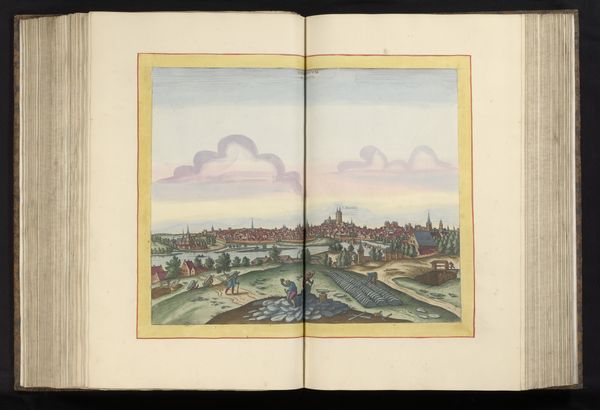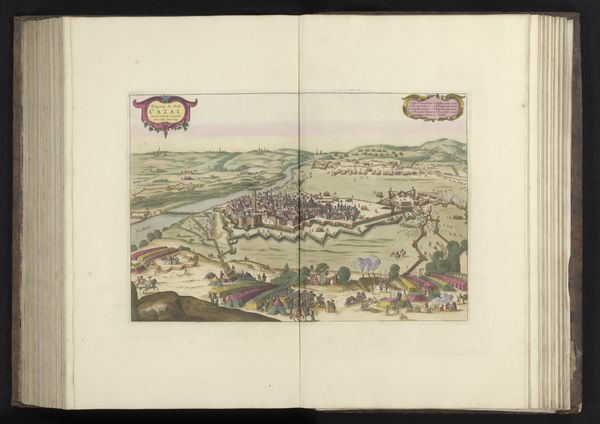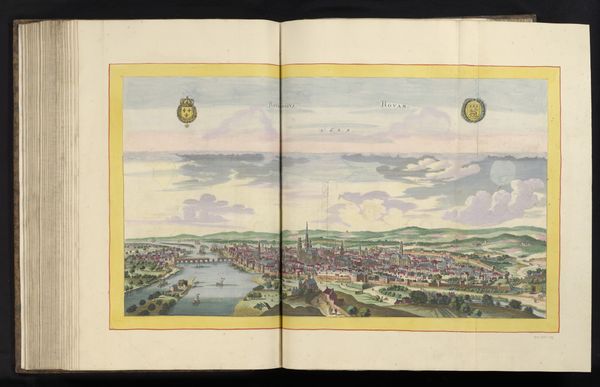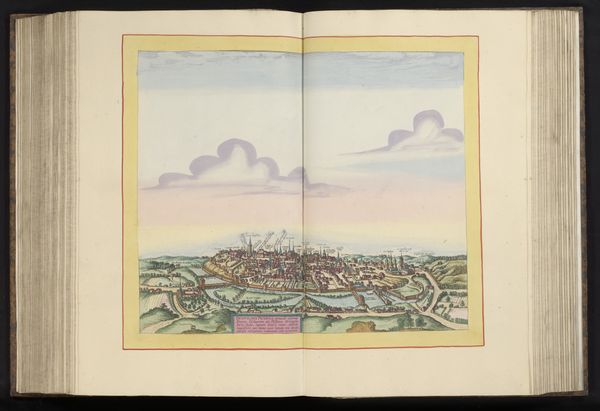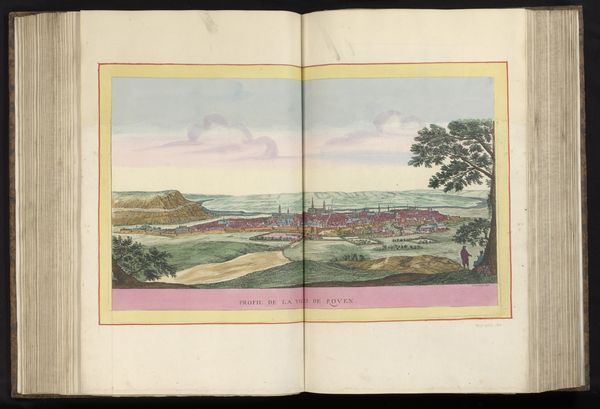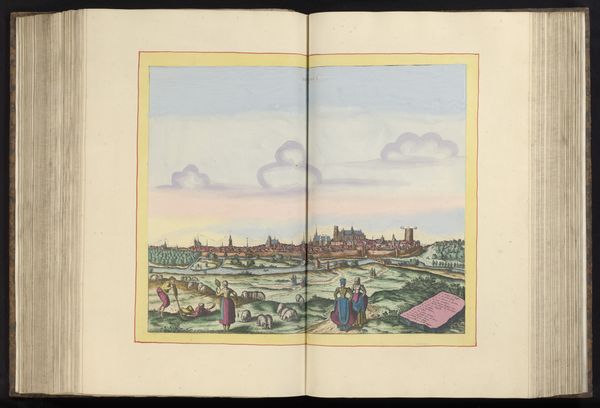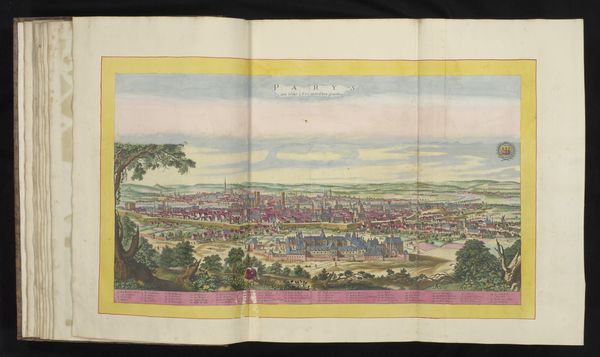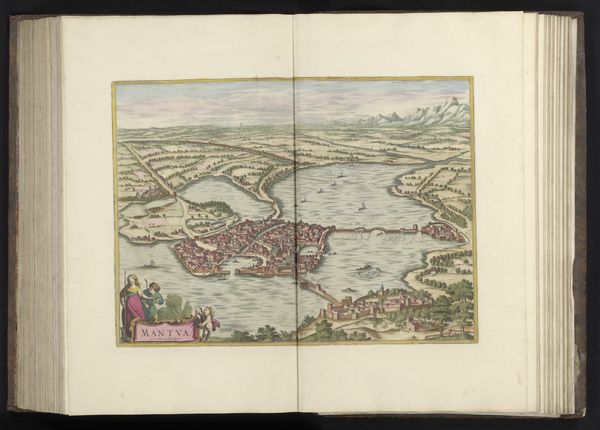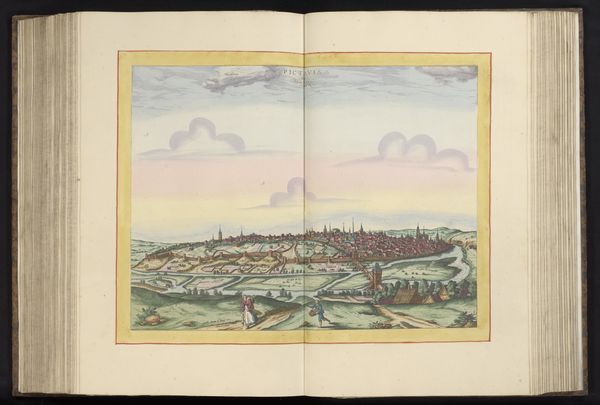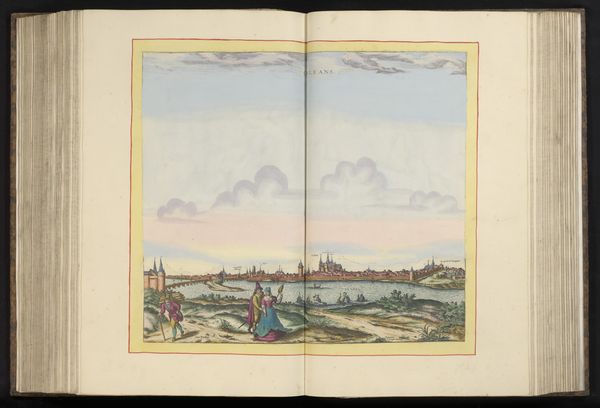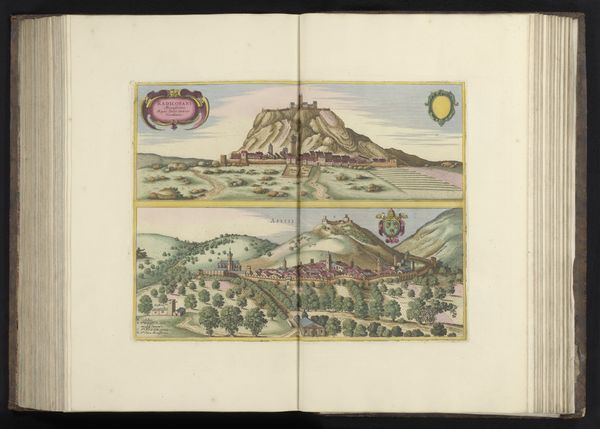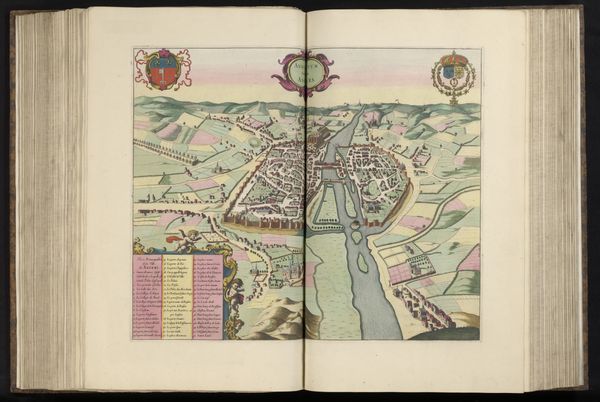
drawing, print, etching
#
drawing
# print
#
etching
#
landscape
#
coloured pencil
#
cityscape
#
northern-renaissance
Dimensions: height 373 mm, width 472 mm, height 531 mm, width 630 mm
Copyright: Rijks Museum: Open Domain
Curator: Look at the sheer detail in this print, "Gezicht op Bilbao" by Frans Hogenberg, likely created between 1544 and 1575. It’s currently held in the Rijksmuseum collection. The perspective, almost bird's eye, is just remarkable. Editor: Immediately, I’m drawn to the texture, even the suggestion of it. The landscape rolls away in neat little manufactured forms, so very contained. I wonder, how accessible were the raw materials – the paper, the inks, the colored pencils that mimic pigment – to Hogenberg? Curator: Access would have been related to his role in Antwerp’s printing industry; his work in engravings, etchings, and as a map colorist suggests readily available workshops. Notice, though, how this particular piece highlights the urban landscape of Bilbao—its public function as a centre for commerce and power. It speaks volumes about the period’s socio-political mapping and city branding through the accessible format of prints. Editor: Absolutely. It's fascinating how printmaking, viewed often through the lens of mechanical reproduction, relied then on an intricate blend of skilled labor and materials extraction, both physical acts within a socio-economic matrix. The etching creates lines that almost seem woven, highlighting the relationship between material transformation and artistic production. Curator: Think of it as a promotional tool, in a way. It's visual propaganda shaping perception and projecting power, just as townscapes were depicted as centres of innovation or key trading ports. The inclusion of resting people is a smart, but calculated move. They invite you in! Editor: Yes, but where did Hogenberg source his pigments? Who was involved in the extraction, refinement, and trade of those materials that render Bilbao as picturesque? I see hands everywhere! Also, you’re so right, how did people consume the print as both a source of visual information and an artistic object representative of craft and commerce? Curator: Exactly. And let’s consider the gallery’s own role now. The Rijksmuseum itself further enhances the imagery's stature. This piece allows the viewer an important glimpse of societal mechanisms related to its production. Editor: This print provides an intersection point – between labor, art, and politics – as well as what becomes public visual record. Curator: I hadn't considered the labor side to it as deeply. Thanks to you I can imagine all of the invisible processes behind this image. Editor: I can imagine its place in the marketplace of representations in the hands of individuals and the cultural institutions they make up! Thanks.
Comments
No comments
Be the first to comment and join the conversation on the ultimate creative platform.
